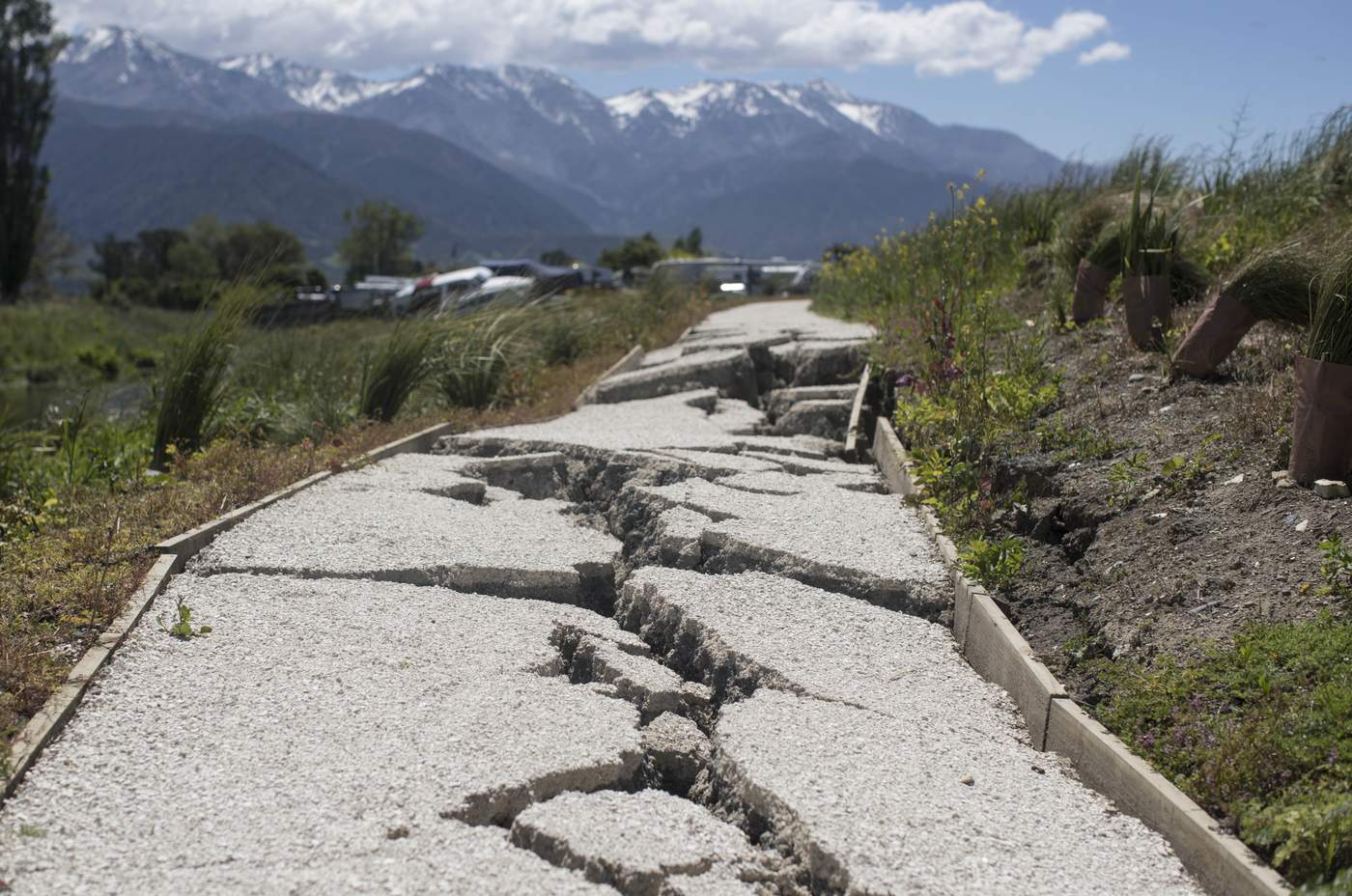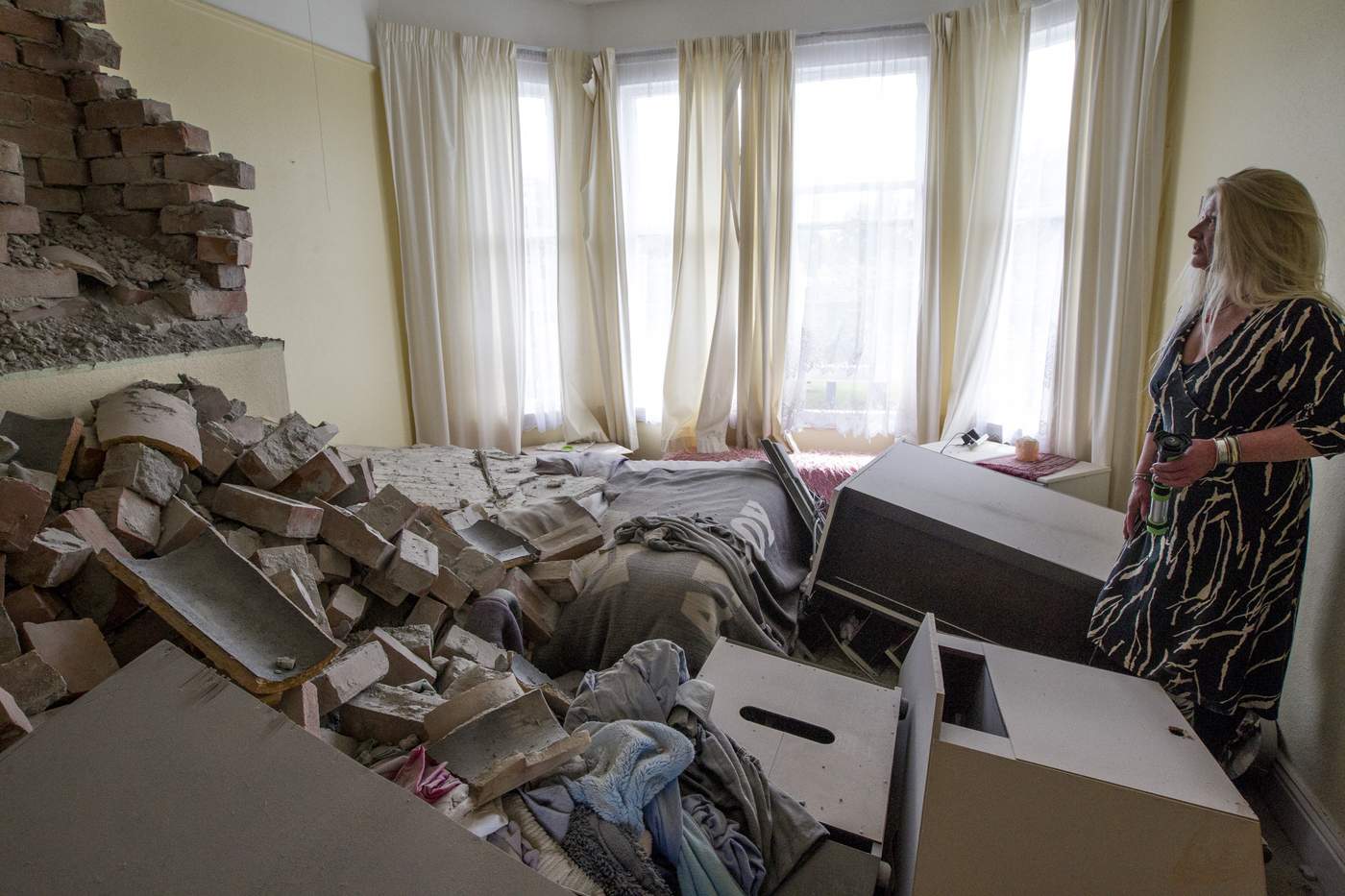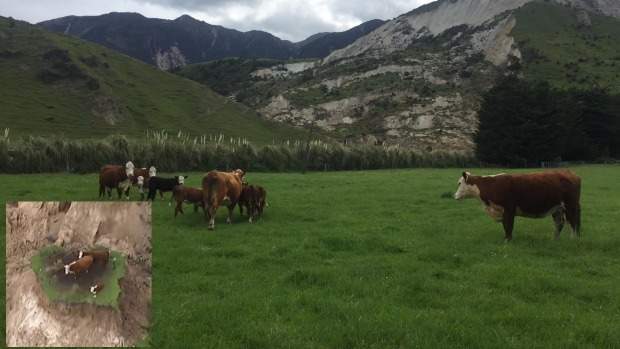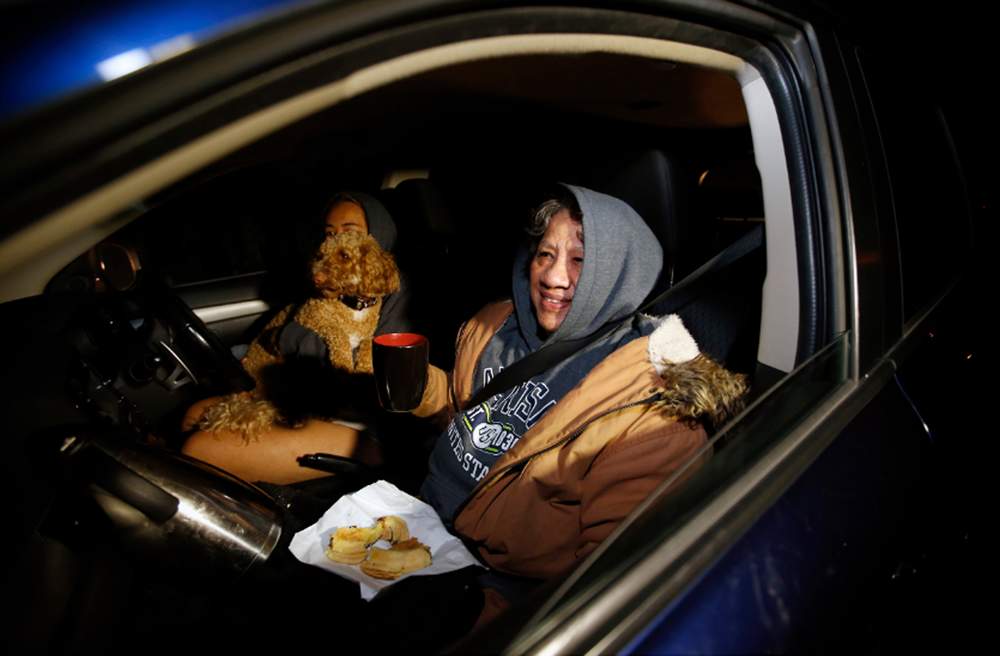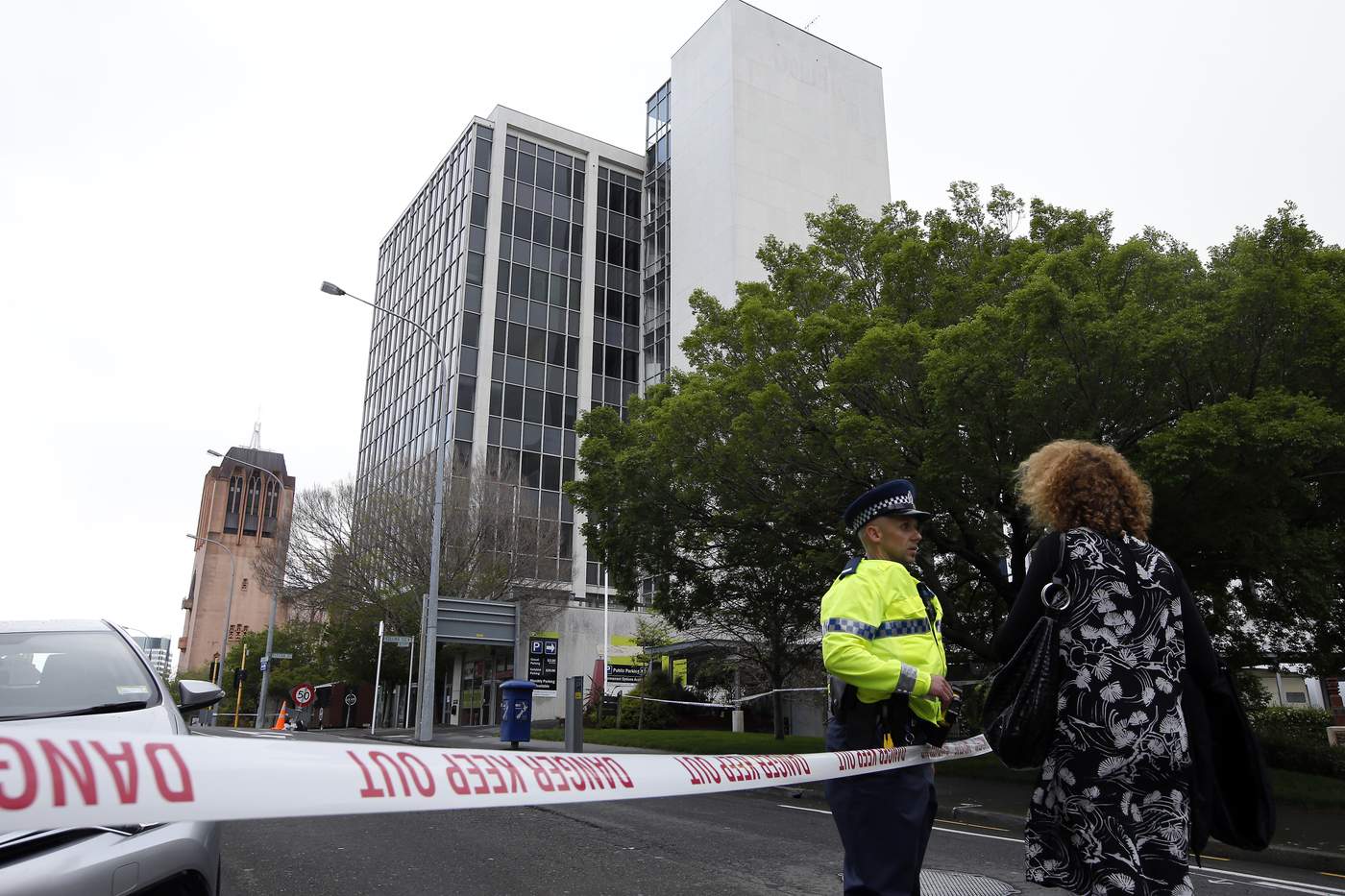Bigger than the Napier earthquake of 1931, the huge quake hit near Kaikoura, at 12:02 in the morning.
After a minute of rocking and rolling, the earth finally took a breather and we soothed our children, our pets and one another before realising it was just the beginning of a traumatic series of events that would be felt across the country.

Before the week was out we would battle aftershocks - some as high as magnitude 6.2, the threat of tsunami, and an unrelenting and ferocious storm causing floods and massive landslides cutting off roads and isolating towns.

The quake claimed two lives. One person was killed when a Kaikoura homestead collapsed. Another died of a heart attack at a property at Mt Lyford.
It is a miracle there were not scores of fatalities - undoubtedly that came down to the fact that it struck in the middle of the night rather than during a working day. But for the families and friends of those who did die, the toll is too high.
Centred 15km north-east of Culverden, near Hanmer Springs, at a depth of 15km, the initial jolt was so severe it was felt from the bottom of the South Island to the top of the North.
It was so big the earth moved two metres to the north in Marlborough, according to data from GNS Science.
The area was completely cut off, with quake damage and landslides blocking roads and highways, destroying water infrastructure, and knocking out power and communications.
And as if they hadn't endured enough, torrential rain and freezing southerly winds lashed the town in the days that followed, hindering efforts to get the road reopened.
An inland road link was finally reopened to Kaikoura - but only for military vehicles. It's unclear when the full road link will be open.
Kaikoura may never be the same again.
People are starting to return to Kaikoura's main street following Monday's earthquake, but life is far from normal.
Damage to buildings is evident, armed personnel are in town, and volunteers are pitching in to help out where they can.
Many roads are so severely damaged repair jobs will take weeks and months. As well as causing extensive damage to homes, hillsides, railway lines and roads, the earthquake has lifted land in Kaikoura harbour.
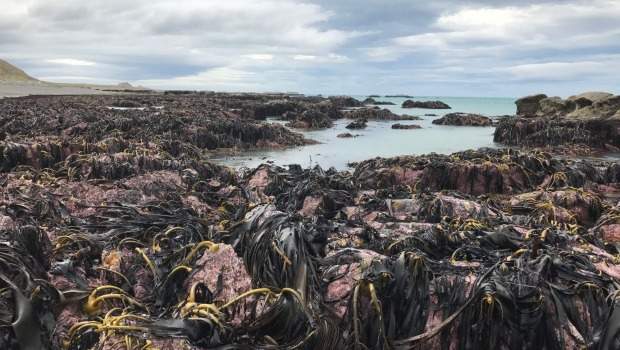
Co-seismic movement, the seismic release of energy along a fault, is behind Kaikoura's lifted seabed. (TREVOR BURKHART)
Residents tried to save marine life exposed by the shift in the seabed but their efforts to throw mainly paua and crayfish back into the sea were merely a drop in the ocean.
Barney Muir survived the February 22, 2011, Christchurch shake but says this was "worse by a long way".
He and wife Deb, who live in Kaikoura, are remarkably stoic given they believe the house is unsalvageable.

Barney Muir looks at the damage to his Kaikoura home after the 7.8 earthquake early on Monday morning. (ROSS GIBLIN/FAIRFAX NZ)
The land has slumped so far the deck has dropped 20cm below the house and the foyer frame is a twisted mess, its glass shattered over the path. "Where would you start?" Barney says.
Hundreds of people were evacuated from their homes to higher ground in Kaikoura, with two 6.2-magnitude aftershocks within an hour of the main shake, and a magnitude-6.0 quake around 2.30am. A magnitude-5.1 quake classed as severe hit the area around 6.15am.

(ALDEN WILLIAMS/FAIRFAX NZ)
Takahanga Marae, which is also a civil defence welfare centre, provided shelter to more than 600 Kaikoura residents and stranded tourists, despite not having water, electricity or a functioning sewerage system.

Hot meals were cooked on the marae's gas cookers and Ngāi Tahu's fishing company donated seafood, including hundreds of crayfish normally destined for restaurants.
Residents and visitors were stranded for two days before air and sea rescue came. By early Thursday morning some 450 evacuees, plus four dogs and seven tonnes of luggage were taken by the HMNZS Canterbury to Christchurch.
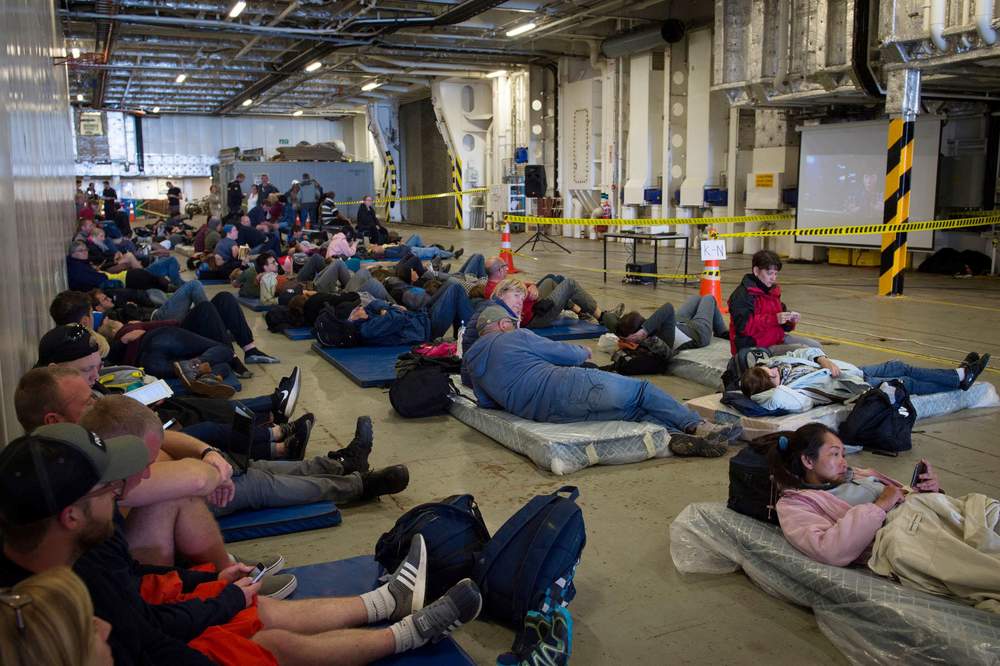
Kaikoura evacuees on board HMNZS Canterbury, en route to Christchurch. (SUPPLIED)
The earthquake has put a spanner in the works for the Navy, who had a big party planned this week to celebrate its 75th anniversary.
It was set to welcome international ships with a gun salute and fleet review, but plans were disrupted with many diverting to Kaikoura.
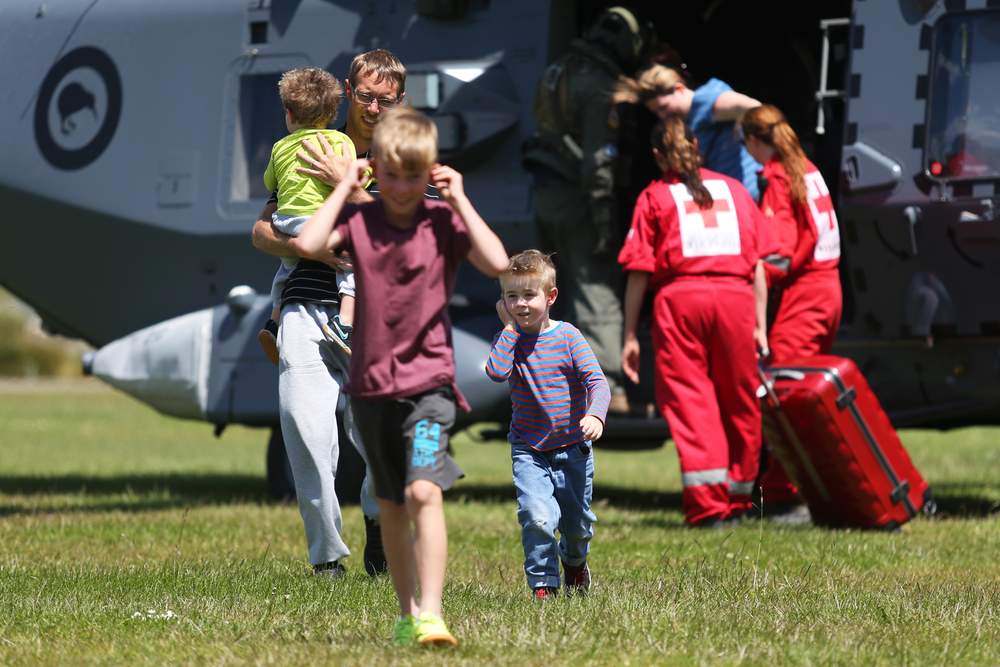
Tourists evacuated from Kaikoura by military helicopter arrive in Christchurch on Tuesday. (JOSEPH JOHNSON/FAIRFAX NZ)
Another 165 evacuees were airlifted out of Kaikoura on NZDF helicopters throughout Wednesday.
British tourist Simon Gray got it right when he summed up his experience.
"Sleeping three nights in a car and experiencing an earthquake was not on our itinerary but the main thing is we are alive and there are people less fortunate than us. Someone died in Kaikoura so that puts it in perspective for me."
Helicopters delivered about 8000 kilograms of food, water and other supplies for those remaining in Kaikoura and an Air Force Hercules air-dropped about 5000 litres of water.
Noeline O'Carroll and her partner John McIntyre, who live at Rakautara about 20 kilometres north of Kaikoura, found themselves cut off after the earthquake.
"From our property we could only go 1km either way, it was dark and there were boulders on the road that had come down the hill behind us," she said earlier this week.
With no cellphone coverage, internet access or power, O'Carroll was unable to contact her family, so in the morning they tried to wave down one of the helicopters passing overhead.
"Helicopters were going past all day from about 6am in the morning and we were just waiting and waving," she said.
"We didn't want to be taken out, we just wanted someone to stop and take a note to our families that we were OK - that's all we wanted."
She and some of the others trapped in Rakautara planned to gather some rocks and write "help" on the highway.
But as they were talking a helicopter landed and out stepped her son, Chris O'Carroll, who had chartered the aircraft from his home in Rangiora after failing to hear anything from his mother.
"She got quite a shock when she saw me get out of the helicopter, I'll never forget the look on her face," he said.

On Graham Collins' farm, uncollected fresh milk is being fed to calves, instead of going to total waste. (LAWRENCE SMITH/FAIRFAX NZ)
The reverberations from Monday's earthquake continued for North Canterbury farmers. With the roading chaos, dairy farmers near Kaikoura had no way of getting their fresh milk out. Instead, they've had to dump it.

Canterbury farmers like Graham Collins, who owns a farm on Kaikoura's outskirts, have had to dump all their fresh cows' milk as pasture irrigation and calves' feed. (LAWRENCE SMITH/FAIRFAX NZ)
Fonterra trucks that typically collect milk from the 20-odd farms across the district every day have had their collections stymied by damage to State Highway 1.
The cows must be milked or they'll dry off or develop mastitis, so the milk must be dumped or used to feed calves who don't have water.
Collins estimates he's ridding 14,000 litres of milk per day - and that's just his farm.

A tank on Graham Collins' farm downed by the quake. (LAWRENCE SMITH/FAIRFAX NZ)
With about 21 farms across the district with herds twice the size of his, the daily dump in litres is easily in the six figures.
The total cost of the fallout from the earthquake is expected to be in the billions of dollars.

Glass and masonry fell from buildings on Wellington's Wakefield Street. (KATARINA WILLIAMS/FAIRFAX NZ)
In Wellington, windows in some high-rise offices were smashed, while plaster and masonry tumbled down from buildings.

Amora Hotel guests rushed outside after the quake. (HAGEN HOKINS/GETTY IMAGES)
Near Civic Square, hotel guests huddled together in bathrobes while they waited for their buildings to be cleared.
Many tourists who had visited the Beehive the day before found themselves being hosted there in its civil defence bunker being fed and watered, many of them in shock having never experienced an earthquake before.
Trains and ferries in both the North and South Islands were cancelled.
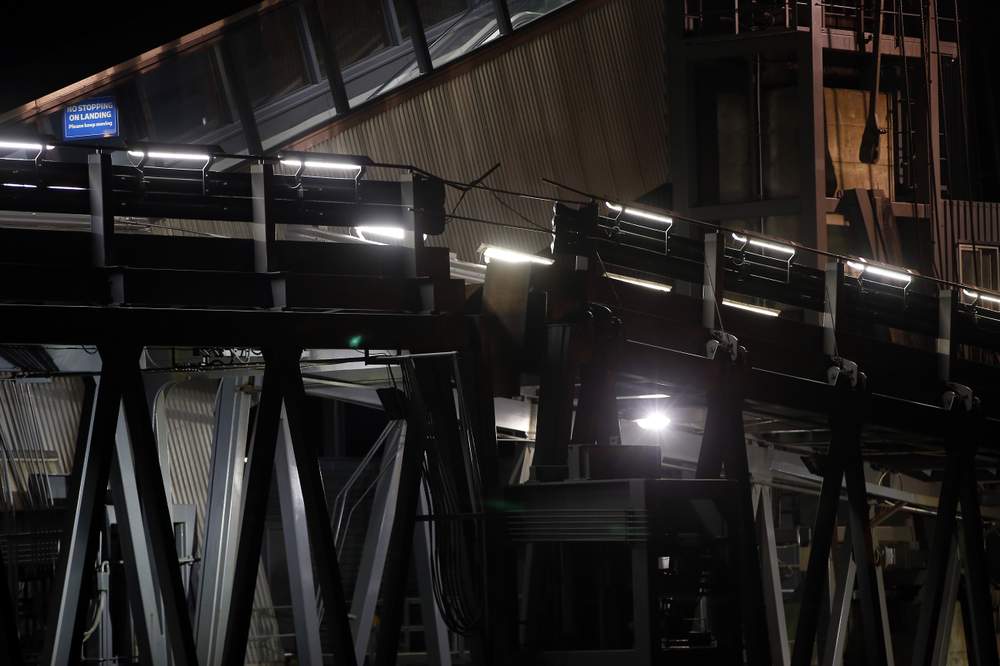
The passenger bridge at Wellington's ferry terminal broke in the quake, and later washed away. (MONIQUE FORD/FAIRFAX NZ)
Interislander ferries were stranded at sea after being unable to dock at Picton immediately after the quake, and the Wellington ferry gangway was swept away. It would have been an anxious wait for passengers feeling vulnerable to possible tsunami.
Schools were closed on Monday in earthquake affected areas forcing the cancellation of NCEA exams for many students.

Melissa and Matt Mill, with their daughters, Skyla, (in uniform) and Alisha were the victims of opportunist thieves. (JOHN KIRK-ANDERSON/FAIRFAX NZ)
The devastating effects of earthquakes are all too familiar for Cantabrians. Christchurch been there and done that twice already.
They know, more than most, that events like this bring out the best and the worst in humanity.
One family who had evacuated their New Brighton home due to tsunami warnings at about 2.30am came home to find they had been burgled. Melissa and Matt Mill, with their daughters, Skyla and Alisha, who is disabled, came home to find their place ransacked and their possessions taken, including a $5000 hearing device of Alisha's and Matt's work truck.
Their home was one of 19 Christchurch properties, residential and commercial, targeted by thieves after the earthquake.

Tens of thousands of dollars were donated to the Mill family within the day. (JOHN KIRK-ANDERSON/FAIRFAX NZ)
But the disgust at being taken advantage of in such a desperate situation was tempered by the generosity of total strangers who had offered the family gifts including food, a television, money, and a mini ipad for Alisha.
"It's been quite overwhelming...We're not really those sort of people really, we just do our own thing and battle on, yeah so it's great the community helps out," Matt said.
Just as the earth seemed to calm, the heavens opened and a weather bomb smashed into earthquake affected areas.
Heavy rain and gales closed roads, brought down trees, and caused slips in central parts of the country, hampering efforts to clean up after Monday's massive quake.
The "perfect storm" is how one workman in Wellington described the combination of earthquake and torrential rain that contributed to cascades of rock and soil around the city.
Schools were shut and people were urged to stay away from work as road closures due to flooding and multiple slips meant that for hours there was no way in or out of the city on the main highways.
The flooding in Lower Hutt and Petone was the worst in more than 10 years with some streets totally submerged and homes cut off in waters as deep as 50cm.
The combination of earthquake damage and weather disruption led to the cancellation of New Zealand Scholarship examinations on Monday in quake affected areas.

Zephyr Wills outwitted the elements to make his NCEA exam. (VIRGINIA FALLON/FAIRFAX NZ)
But Kapiti College student Zephyr Wills wasn't going to let a little thing like a massive earthquake, nor the biblical floods that followed, stop him from sitting his exam.
The 17 year-old realised there was no other way to get from his home to Kapiti College so he hopped on his bike.
"Trains, buses and taxis were all stopped and seeing as there was no way of getting to school by sea, biking seemed the best option."
Wills wrapped his schoolbag in a huge plastic bag and wore an oilskin great coat to keep out the rain. The 8km ride from his home in Paekakariki took a very wet, slow, miserable hour to complete.
His mother, Sophie Perkins, said she was worried about her son making the treacherous journey.
"There were two spots where he may have had to turn back - the first bridge where the eels live, the water was right up onto the track... and the second bridge, which is level with the track and was knee deep in fast flowing water. [But] he cycled through it!
"He saw lots of very wet rabbits, pheasants and very sad looking lambs.
"There was gale force nor-west headwind the whole way with torrential rain in his face. The rain went through the oilskin. On the positive side, while cycling he didn't feel any earthquakes.
"And thinks he did quite well in the exam."
More than 50 buildings in central Wellington were damaged after the initial quake and on Tuesday evening police cordoned off Molesworth St in the central city as another faced collapsed.
Earthquake damage caused parts of the newly-built Statistics House to crumble.

The ceiling on the ground floor of Statistics NZ's waterfront headquarters partially collapsed. (KEVIN STENT/FAIRFAX NZ)
Concrete beams in the the building were ripped from the outside of the structure, causing the ceilings to partially collapse.
Later in the week, Reading Cinema complex and carpark on Courtenay Place was evacuated and cordoned off after the building was found to be at imminent risk of collapse. About 100 people were evacuated from the central city apartments surrounding the complex.
On Thursday, the Government launched an inquiry into the quake performance of Wellington's buildings.
As the days go by, more buildings are being evacuated.
On Thursday, Archives New Zealand, Intergen and New Zealand Post House joined the list.
Wellington Mayor Justin Lester denied the city centre needed to be declared a red-zone, to the surprise of Canterbury Earthquake Recovery Minister Gerry Brownlee.

(IAIN MCGREGOR/FAIRFAX NZ)
The very real fact that we New Zealanders live on a seismically active part of the earth doesn't make earthquakes any easier to deal with.
The best we can do is keep our earthquake kits ready, have a plan, hope for the best and prepare for the worst.
The region affected by the recent earthquake has been one of the most seismically active in New Zealand over the past few years, including earthquakes that occurred as part of the Cook Strait earthquake sequence in 2013.
GNS Science has advised there is a strong likelihood of another major earthquake in the next 30 days.
How big and how bad no one knows.
Perhaps a shaky ground is the price we must pay for living in this beautiful country.


